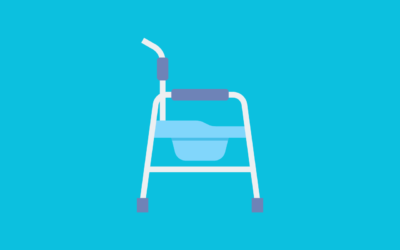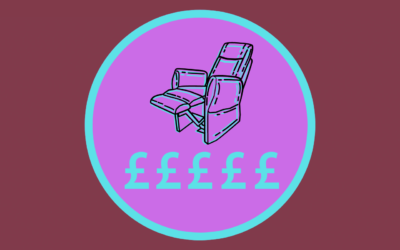Key Takeaways For Mobility Cutlery Aids
Adaptive Cutlery Overview: Explore the world of adaptive cutlery aids designed to enhance dining independence for individuals with limited dexterity or cognitive function.
Functional Variety: From easy-grip cutlery sets to self-stabilising spoons and weighted alternatives, discover a range of adaptive utensils catering to diverse needs and conditions, such as arthritis and Parkinson’s.
Practical Tips: Learn how to use adaptive cutlery effectively, gaining insights into the advantages of specific designs like skinny forks, adjustable spoons, and angled cutlery for improved comfort and ease of use.
Top Mobility Cutlery Aids
Many individuals find that mobility cutlery aids are a game-changer, allowing them to grasp and use silverware easily. In this guide, we’ll go through the numerous mobility cutlery aids available and the considerations you should give each one before making a purchase. After finishing this article, you’ll have all the information you need to choose the best mobility cutlery aid to meet your needs.
What Is Adaptive Cutlery?
Adaptive cutlery is utensils modified to accommodate anyone with limited dexterity or cognitive function. Because of their ergonomic construction, these instruments are easier to work with for extended periods. Mobility issues brought on by diseases like arthritis and Parkinson’s might make it embarrassing for some people to eat in public; these aids may be a game changer.
What Are The Two Types Of Adaptive Equipment?
You may use “assistive” and “adaptive” labels for various accessible adaptive technologies. Walking canes and reading magnifiers are only two examples of useful aids. Building ramps for wheelchairs is only one example of an adapted solution you can craft to boost the use of equipment or buildings that would otherwise be inaccessible.
What Is Easy Grip Cutlery?
“Easy grip” spoons and other silverware may be easier for someone with limited manual dexterity. Ergonomic handles are a common element of these instruments. They may also include features like raised grips or weighted bases. Those who have trouble eating due to restricted hand movement or grip strength may benefit from using easy-grip cutlery.
How Does A Parkinson’s Spoon Work?
A common kind of modified cutlery for those with Parkinson’s is the spoon. These spoons are designed to be more manageable for people with Parkinson’s disease, with features including a weighted grip to reduce tremors and an angled bowl to help with food placement. Specially designed spoons for people with Parkinson’s disease may include drinking straws or other features to aid usage. Specialised utensils that are easier to grasp and use may help someone with Parkinson’s disease eat independently.
What Is A Self-Stabilising Spoon?
The self-stabilising spoon is a modified cutlery that helps those with limited hand strength or dexterity enjoy a meal without assistance. The spoon’s weighted handle keeps it stable as you eat, and the bowl’s scooped design makes it simple to load food onto the spoon. It’s worth noting that a few of these self-stabilising spoons may be used as drinking straws or for other purposes. With a self-stabilising spoon, one may eat with more independence and dignity by strengthening one’s grasp and increasing one’s sense of control.
How Does The Self-Stabilising Spoon Work?
The self-stabilising spoon is a modified cutlery that helps those with limited hand strength or dexterity enjoy a meal without assistance. These spoons may also be used as drinking straws or for other purposes. The spoon’s ergonomic design makes it easier for persons with tremors and other problems to use traditional spoons.
What Is Weighted Cutlery?
Weighted cutlery is one kind of adapted silverware that may allow people with restricted hand movement or grip strength to eat more independently. The weighted handles on these instruments make them steadier and less of a chore. Heavier handles on classic cooking tools better anchor the user’s grasp, minimising the impact of hand tremors and other motions. Those who have problems using regular cutlery owing to diseases like arthritis or Parkinson’s disease may benefit from utilising weighted alternatives.
Is Heavier Cutlery Better?
The optimal weight for cutlery depends on the person using it and the circumstances in which they will use it. People with restricted hand mobility or grip strength may find that heavier cutlery provides better stability and is simpler to handle. The extra weight may help the person maintain their balance while eating, allowing for more freedom of movement and less shakiness. However, some people may struggle to use heavier silverware because of weak hand muscles. Cutlery and other utensils that are lighter and more flexible may be more practical in such a situation. The user’s preferences and skill level should guide your selection of silverware.
Why Do People Use Weighted Utensils?
For example, there are a lot of people who like using weighted cutlery. Weighted utensils may be helpful for those with reduced hand movement or grip strength due to conditions like arthritis, Parkinson’s disease, or others. The user’s ability to eat independently may improve with the extra weight since tremors and other movements are reduced. As a bonus, weighted utensils may be useful for those whose fine motor skills are compromised due to developmental delays or other medical issues. Some people may find it easier to use heavier cutlery than standard tableware.
How Do You Use Adaptive Cutlery?
Using flexible cutlery, which has several advantages over regular silverware, would be a mistake. Being good at using multifunctional cutlery starts with picking the right type. These days, you can get a wide variety of flatware designed to serve various purposes, from easy-grip cutlery to self-stabilising spoons to weighted silverware. The skills required to master today’s cutlery are the same as those needed to master yesteryear’s silverware. Use the tool’s handle or other characteristics to keep a solid grip on it. As with a spoon or fork, you may use the instrument to pick up food and bring it to one’s mouth. You can eat independently with little assistance if you practise using modified utensils.
What Are Skinny Forks Used For?
Adaptive cutlery, such as shorter, thinner forks, may make mealtime more manageable for those with restricted hand movement or grip strength. Due to their slim and lengthy profile, these forks are designed to be comfortable to hand. Those with difficulty using a regular-sized fork due to arthritis, Parkinson’s disease, or another medical condition may find it simpler to use a narrower fork. Forks with shorter handles and shorter prongs facilitate eating without utensil help.
What Is An Adaptive Spoon?
An adjustable spoon may help you continue eating independently even if you have limited movement or strength in your hands. These ergonomic spoons include features like built-up grips or weighted handles to make them more natural. A spoon with a handle that you can adjust to suit the user’s hand may be useful for those with limited dexterity due to arthritis, Parkinson’s disease, or another ailment. Adaptive spoons let persons eat independently and with dignity by allowing for a more secure grip and accuracy.
What Is Angled Cutlery?
Individuals with limited hand mobility or grip strength may benefit from angled silverware and adapted cutlery. The handles of certain spoons and forks are angled about the tines to make scooping and eating easier. Angled cutlery may also be helpful for those with hand impairments due to conditions like arthritis or Parkinson’s disease. Angled cutlery is more comfortable to hold and handle, giving the diner more independence and deference.
Be sure to check out all the other daily living aids.
Top Mobility Cutlery Aids
Related Mobility Aid and Daily Living Support Articles
- Best Cutlery for Limited Hand Mobility – Discover cutlery options designed for easier handling and grip.
- Best Beakers and Plates for Mobility Aids – A guide to choosing supportive dining aids.
- Pill Organiser Buying Guide – Organizers to help manage medication schedules with ease.
- Best Walking Aids – Explore walking aids that improve stability and support daily activities.












